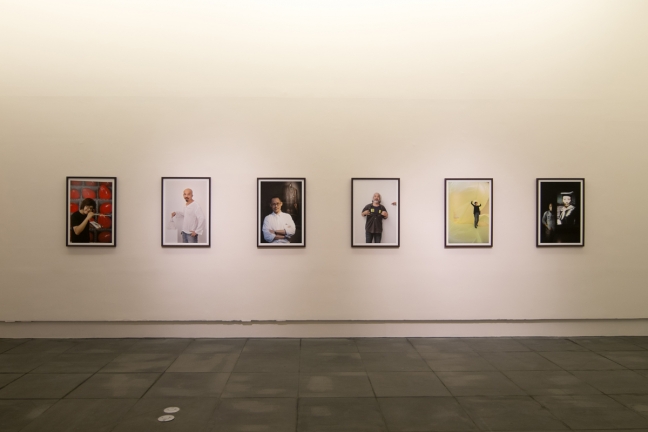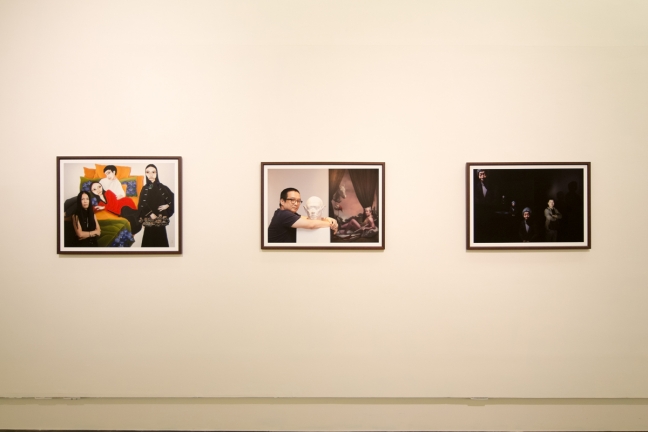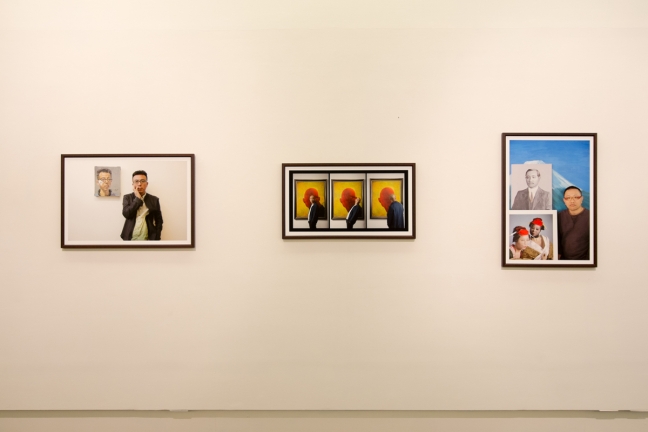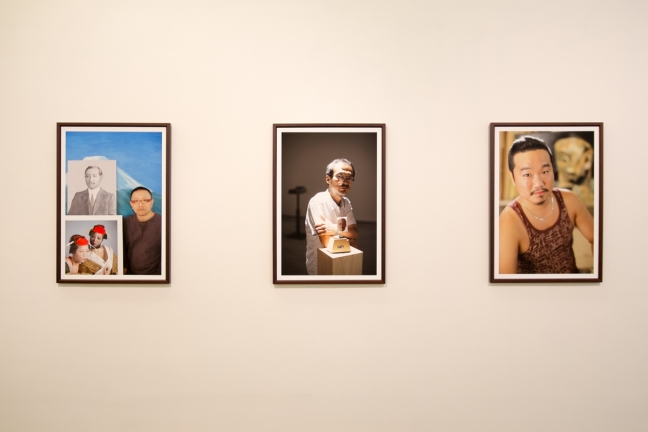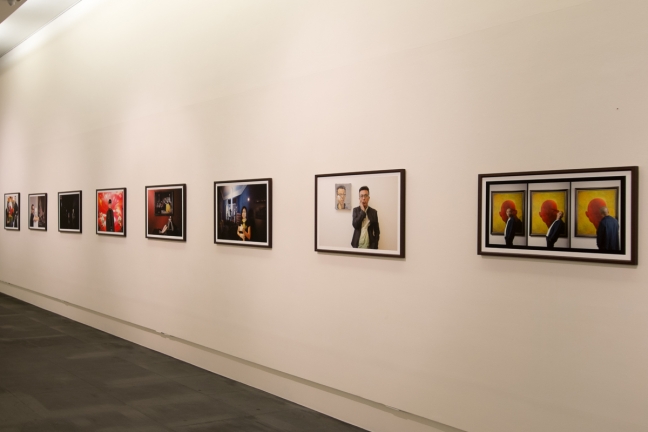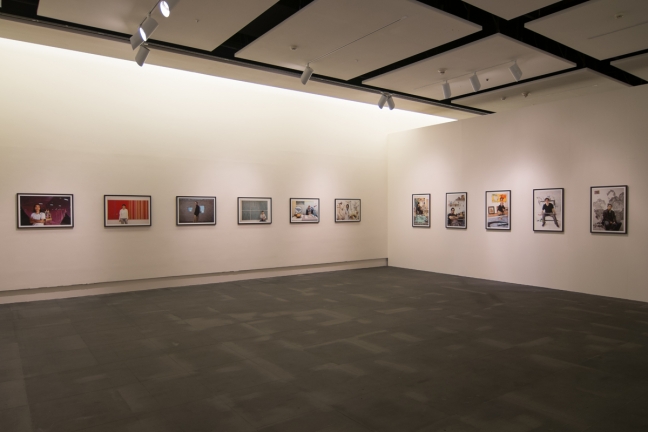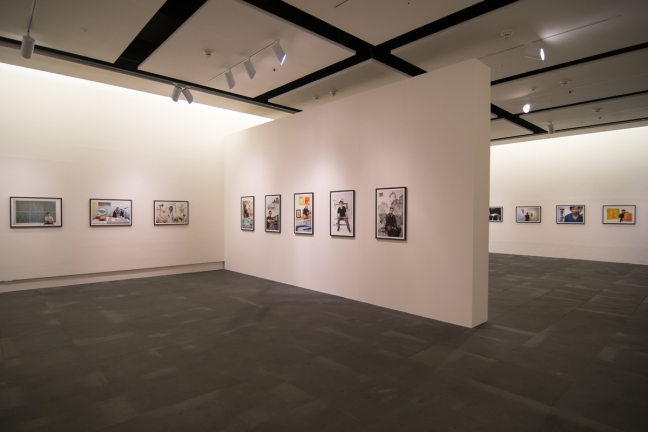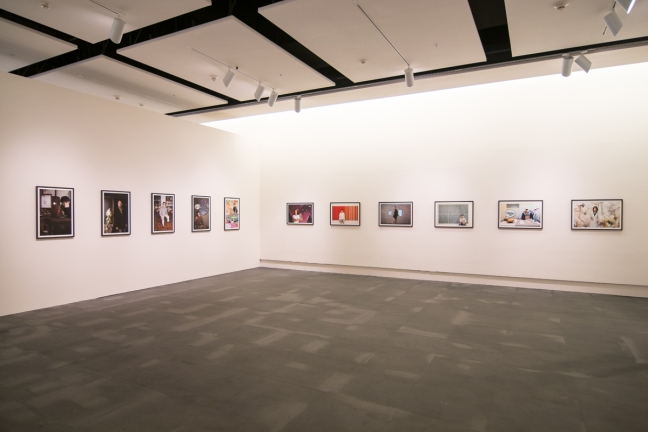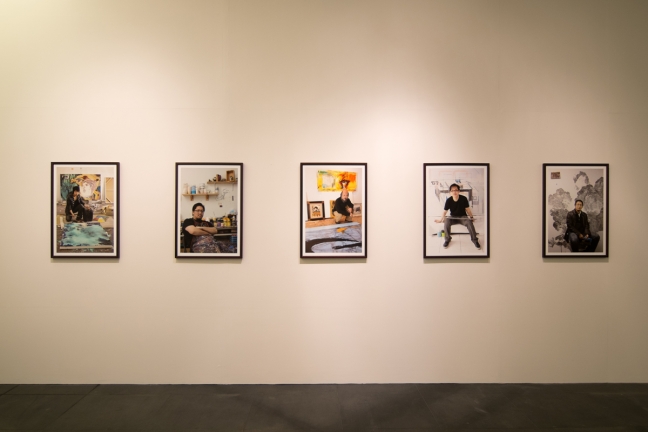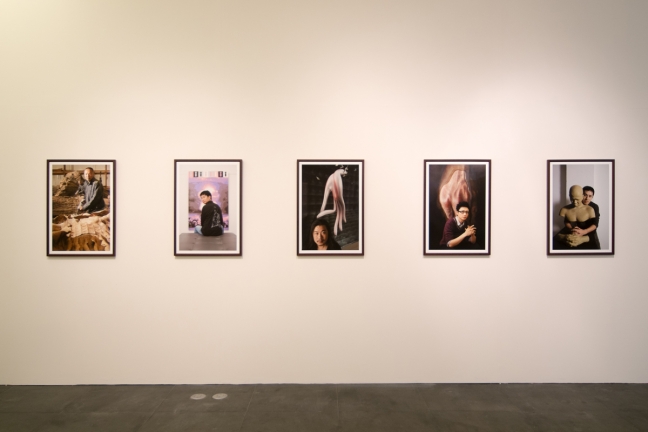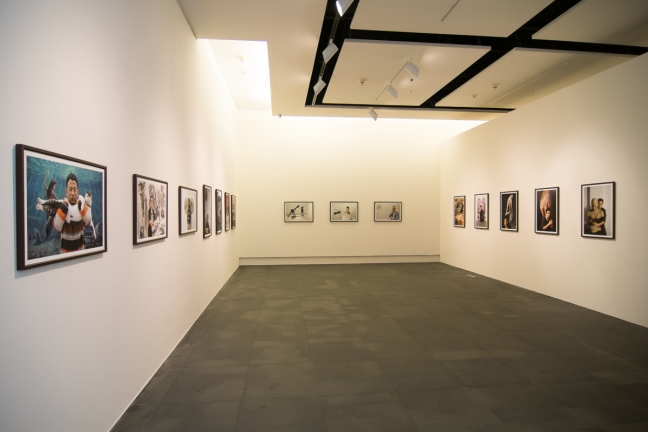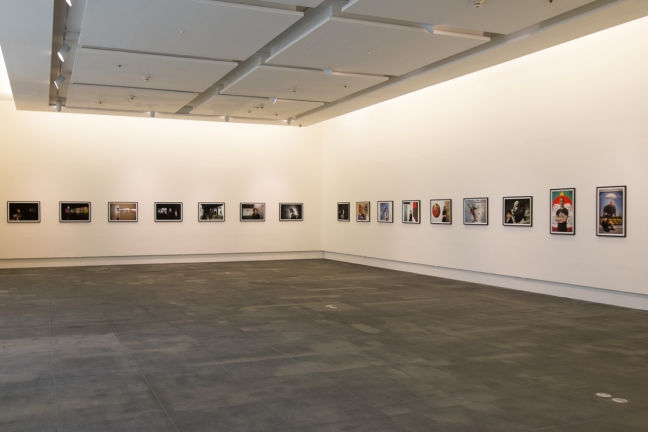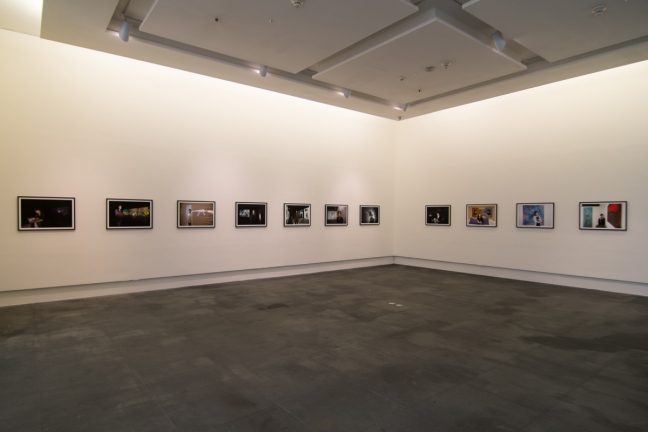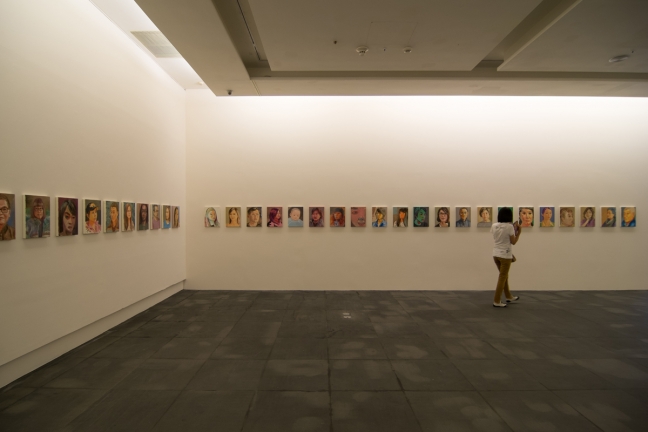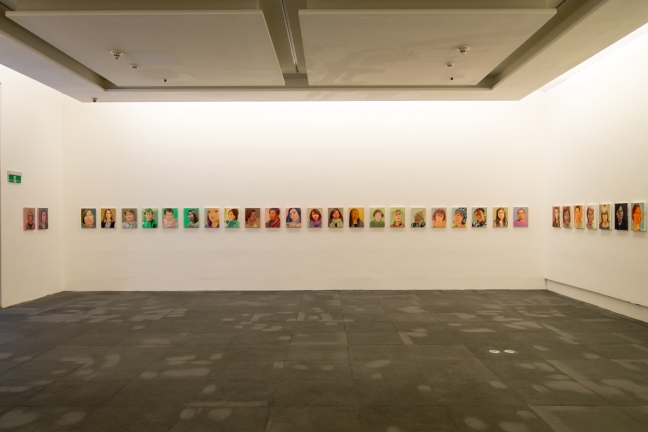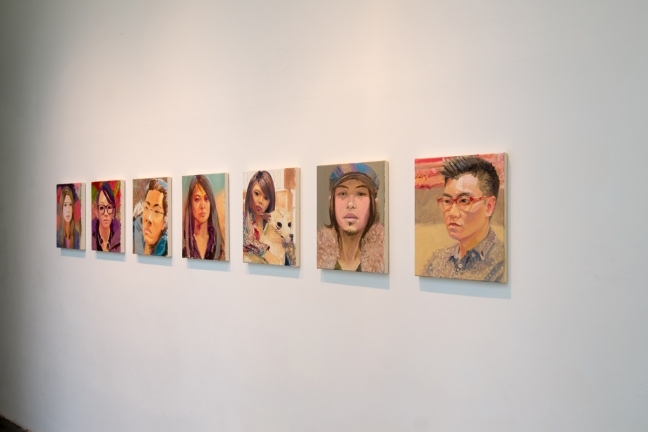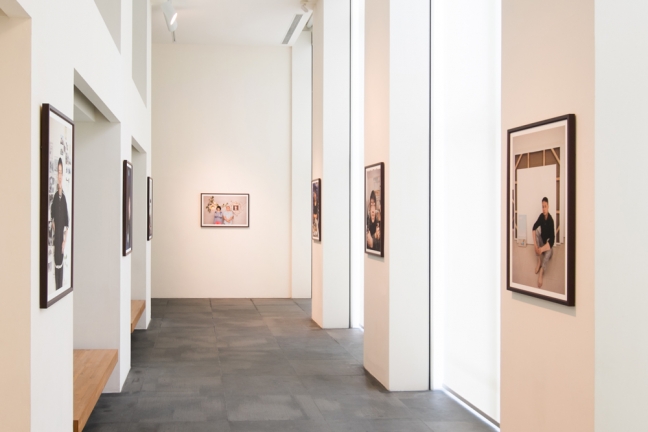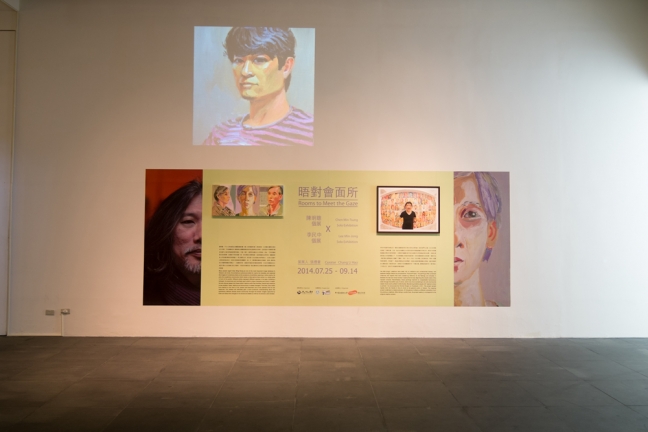Rooms to Meet the Gaze: Duo Exhibition by Chen Ming-Tsung and Lee Min-Jong
2014.07.25~2014.09.14
09:00 - 17:00
When we portray a figure, we always measure and observe the figure with our hands and eyes. The portrait will become impossible without a real target. Painting emphasizes revealing the charms of figures by depicting their shapes. A painting will be cut off from the reality and fail to reveal the charm if there lacks a real target, which will lead to an utter lack of fidelity. Even if there is a real target, it is difficult to maintain the fidelity if the painter fails to observe the target correctly. We should be consciously aware of this point. To reveal the charms of figures, we should observe them directly and precisely rather than emphasizing the use of chiaroscuro.”
On Painting,” Gu Kai-Zhi, Eastern Jin Dynasty A brief vernacular explanation for the foregoing excerpt is that portraying without observing physical figures will result in great loss of fidelity, while observing the figures imprecisely will result in lapses. To maintain the fidelity of figures in paintings requires painters to observe them directly and precisely. In other words, a painter can vividly portray a figure only by examining and comprehending the figure’s inherent spirit. The well-known thesis of Chinese painting established by Gu Kai-Zhi has been referred as the core of Eastern portrait art by later generations. The thesis emphasizes the creative thinking of portraying from appearance to substance and from shape to charm. A painter should observe and comprehend his/her target figure, capture its inherent temperament and characteristic, and finally integrate its appearance and inherent spirit into a portrait. Through the process of observation and comprehension, the portrait will demonstrate the fusion of the internal and external worlds, and therefore becomes an image of independent existence. Although the Western artistic thoughts have been focusing on human figures, it was not until the Renaissance which advocated respect for humanity and confirmed human-centered values that portrait painting broke away from the glorification of portraits emphasized by religion and politics. Since then, portrait painting formally entered the secular world and achieved unprecedented prosperity. Artists at that time conducted a variety of analyses on portrait painting through anatomy, perspective, proportion, composition, and chromatics, and thereby established many scientific principles followed by later generations until the invention of photography that resulted in a fundamental transformation. Originally, people believed that portraits by different painters vary tremendously because painters differ in their educational background, life experience, and ways of feeling expression that lead to their different comprehension about the figures they portrayed. After the invention of photography, people began to wonder whether the mechanical eye can record and solidify everything it captured and represent it flawlessly. What is the greatest difference between photography and painting in terms of their results? How should we understand the
re-portrayed” painting that treats portraits as its subjects? These are the questions with that portrait painting has to confront. Discussions and reflections pertaining to the foregoing questions remain contending and inconclusive even in the postmodern and contemporary context nowadays. Jacques Derrida tried to investigate portrait painting with blindness and weeping as the subjects, and thereby deconstructs Western cultural philosophy which treats
seeing” as its core idea. Jean Baudrillard also pointed out that images do not serve as a solid basis for knowing the object. They merely produce simulacra for nothing in the end. No matter which argument we adopt, we have sufficient reasons to believe that both painting and photography should return to the interpersonal connections. Detaching from the background of the figure, the eye contact between the viewers and the figure will project, reflect, and even generate various resonances that evoke the viewers’ spiritual imagery. It seems to correspond to the foregoing thesis of
observation and comprehension” to some extent. The exhibition
Rooms to Meet the Gaze: Duo Exhibition by Chen Ming-Tsung and Lee Min-Jong” attempts to explore the diverse ideas formulated through various portraits presented by the two artists with the media of painting and photography. Many people regard Chen Ming-Tsung as one of the most important image database in Taiwan’s art circle. He worked as a photo-journalist for nearly two decades and captured the images of numerous artists on the occasions of exhibition opening or other events. He puts the mysterious community which tends to hide behind their works in a visible state in front of the public. Different artists represent different species in his eyes. Imitating a biologist, he examines and manifests each artist’s unique character and charm in detail. He even delves deeper into these artists’ relations with their families, friends and creations to see whether these relations are harmonious or widely divergent. This time, Chen walks from behind to the front of his camera and becomes one of the species that he has observed. The viewers will definitely gain a more profound understanding about the specifically defined diverse social community through the artists’ images captured by Chen and about the changes in his words and deeds as well as his emotion and mindset. Lee Min-Jong’s creations have been full of intensive and unrestrained fantasy and aesthetic delight. Before he conceived the
Portrait Project,” his paintings often contained creatures and objects that were created by reference to his feelings and situated in between the real and virtual worlds. It seems that he was depicting the chaotic state of the nascent universe. Nevertheless, these paintings reached an unspeakable harmonious state through his skillful use of colors, which may have something to do with his favorite classic music such as Bach’s Cello Suites. Wondering whether people will
rejoice to have a portrait,” he announced the Portrait Project on Facebook in 2011. The project spread rapidly from his friends in the art circle to the general public in Taiwan. The ongoing project underwent a metamorphosis. At first glance it reflects a different orientation from his previous creations. After taking a careful look, the project seems to correspond to his original creative context. Accordingly, the two artists obviously differ in the point of departure for their creations, while overlap to some extent in selecting the subjects in their works. This is particularly manifested in their works in which the two artists serve as each other’s subject. The viewers will definitely find great delights in comparing these works. We may excerpt a paragraph from John Berger who wrote about the image of Alberto Giacometti photographed by Henri Cartier Bresson as the guidance for the prospect visitors to this exhibition.
Imagine one of the sculptures. Thin, irreducible, still and yet not rigid, impossible to dismiss, possible only to inspect, to stare at. If you stare, the figure stares back. This is also true of the most banal portrait. What is different now is how you become conscious of the track of your stare and hers: the narrow corridor of looking between you: perhaps this is like the track of a prayer if such a thing could be visualized. Each side of the corridor nothing counts. There is only one way to reach her—to stand still and stare.”[1] Last but not least, we welcome you to the
Rooms to Meet the Gaze.” [1] John Berger, About Looking (New York: Pantheon Books), 1980, p. 183.
When we portray a figure, we always measure and observe the figure with our hands and eyes. The portrait will become impossible without a real target. Painting emphasizes revealing the charms of figures by depicting their shapes. A painting will be cut off from the reality and fail to reveal the charm if there lacks a real target, which will lead to an utter lack of fidelity. Even if there is a real target, it is difficult to maintain the fidelity if the painter fails to observe the target correctly. We should be consciously aware of this point. To reveal the charms of figures, we should observe them directly and precisely rather than emphasizing the use of chiaroscuro.”
On Painting,” Gu Kai-Zhi, Eastern Jin Dynasty A brief vernacular explanation for the foregoing excerpt is that portraying without observing physical figures will result in great loss of fidelity, while observing the figures imprecisely will result in lapses. To maintain the fidelity of figures in paintings requires painters to observe them directly and precisely. In other words, a painter can vividly portray a figure only by examining and comprehending the figure’s inherent spirit. The well-known thesis of Chinese painting established by Gu Kai-Zhi has been referred as the core of Eastern portrait art by later generations. The thesis emphasizes the creative thinking of portraying from appearance to substance and from shape to charm. A painter should observe and comprehend his/her target figure, capture its inherent temperament and characteristic, and finally integrate its appearance and inherent spirit into a portrait. Through the process of observation and comprehension, the portrait will demonstrate the fusion of the internal and external worlds, and therefore becomes an image of independent existence. Although the Western artistic thoughts have been focusing on human figures, it was not until the Renaissance which advocated respect for humanity and confirmed human-centered values that portrait painting broke away from the glorification of portraits emphasized by religion and politics. Since then, portrait painting formally entered the secular world and achieved unprecedented prosperity. Artists at that time conducted a variety of analyses on portrait painting through anatomy, perspective, proportion, composition, and chromatics, and thereby established many scientific principles followed by later generations until the invention of photography that resulted in a fundamental transformation. Originally, people believed that portraits by different painters vary tremendously because painters differ in their educational background, life experience, and ways of feeling expression that lead to their different comprehension about the figures they portrayed. After the invention of photography, people began to wonder whether the mechanical eye can record and solidify everything it captured and represent it flawlessly. What is the greatest difference between photography and painting in terms of their results? How should we understand the
re-portrayed” painting that treats portraits as its subjects? These are the questions with that portrait painting has to confront. Discussions and reflections pertaining to the foregoing questions remain contending and inconclusive even in the postmodern and contemporary context nowadays. Jacques Derrida tried to investigate portrait painting with blindness and weeping as the subjects, and thereby deconstructs Western cultural philosophy which treats
seeing” as its core idea. Jean Baudrillard also pointed out that images do not serve as a solid basis for knowing the object. They merely produce simulacra for nothing in the end. No matter which argument we adopt, we have sufficient reasons to believe that both painting and photography should return to the interpersonal connections. Detaching from the background of the figure, the eye contact between the viewers and the figure will project, reflect, and even generate various resonances that evoke the viewers’ spiritual imagery. It seems to correspond to the foregoing thesis of
observation and comprehension” to some extent. The exhibition
Rooms to Meet the Gaze: Duo Exhibition by Chen Ming-Tsung and Lee Min-Jong” attempts to explore the diverse ideas formulated through various portraits presented by the two artists with the media of painting and photography. Many people regard Chen Ming-Tsung as one of the most important image database in Taiwan’s art circle. He worked as a photo-journalist for nearly two decades and captured the images of numerous artists on the occasions of exhibition opening or other events. He puts the mysterious community which tends to hide behind their works in a visible state in front of the public. Different artists represent different species in his eyes. Imitating a biologist, he examines and manifests each artist’s unique character and charm in detail. He even delves deeper into these artists’ relations with their families, friends and creations to see whether these relations are harmonious or widely divergent. This time, Chen walks from behind to the front of his camera and becomes one of the species that he has observed. The viewers will definitely gain a more profound understanding about the specifically defined diverse social community through the artists’ images captured by Chen and about the changes in his words and deeds as well as his emotion and mindset. Lee Min-Jong’s creations have been full of intensive and unrestrained fantasy and aesthetic delight. Before he conceived the
Portrait Project,” his paintings often contained creatures and objects that were created by reference to his feelings and situated in between the real and virtual worlds. It seems that he was depicting the chaotic state of the nascent universe. Nevertheless, these paintings reached an unspeakable harmonious state through his skillful use of colors, which may have something to do with his favorite classic music such as Bach’s Cello Suites. Wondering whether people will
rejoice to have a portrait,” he announced the Portrait Project on Facebook in 2011. The project spread rapidly from his friends in the art circle to the general public in Taiwan. The ongoing project underwent a metamorphosis. At first glance it reflects a different orientation from his previous creations. After taking a careful look, the project seems to correspond to his original creative context. Accordingly, the two artists obviously differ in the point of departure for their creations, while overlap to some extent in selecting the subjects in their works. This is particularly manifested in their works in which the two artists serve as each other’s subject. The viewers will definitely find great delights in comparing these works. We may excerpt a paragraph from John Berger who wrote about the image of Alberto Giacometti photographed by Henri Cartier Bresson as the guidance for the prospect visitors to this exhibition.
Imagine one of the sculptures. Thin, irreducible, still and yet not rigid, impossible to dismiss, possible only to inspect, to stare at. If you stare, the figure stares back. This is also true of the most banal portrait. What is different now is how you become conscious of the track of your stare and hers: the narrow corridor of looking between you: perhaps this is like the track of a prayer if such a thing could be visualized. Each side of the corridor nothing counts. There is only one way to reach her—to stand still and stare.”[1] Last but not least, we welcome you to the
Rooms to Meet the Gaze.” [1] John Berger, About Looking (New York: Pantheon Books), 1980, p. 183.

